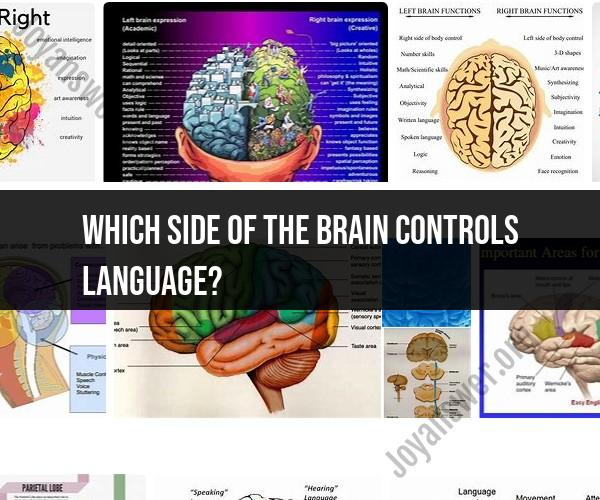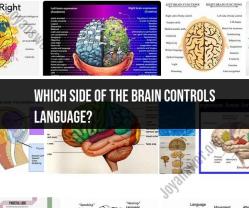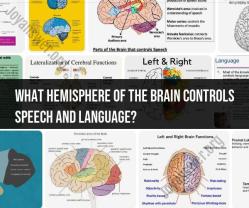Which side of the brain controls language?
Language functions are primarily controlled by the left hemisphere of the brain in the majority of right-handed individuals and a significant portion of left-handed individuals. This specialization of language processing in the left hemisphere is known as "left-hemisphere dominance" for language.
Here's a brief overview of how language functions are lateralized in the brain:
Left Hemisphere: In most right-handed individuals and approximately 70-95% of left-handed individuals, critical language functions such as speech production (Broca's area) and language comprehension (Wernicke's area) are located in the left hemisphere. This dominance for language processing is often referred to as "left-hemisphere language dominance."
Broca's Area: Located in the left frontal lobe, Broca's area is responsible for the production of speech and the coordination of the muscles needed for speaking.
Wernicke's Area: Located in the left temporal lobe, Wernicke's area is involved in language comprehension and the understanding of spoken and written language.
Right Hemisphere: While the left hemisphere is primarily responsible for language, the right hemisphere also plays a role in language processing. It is involved in aspects of language such as processing the emotional tone of speech, understanding figurative language, and some aspects of discourse comprehension.
It's important to note that the lateralization of language functions can vary from person to person. Some individuals may have atypical patterns of language lateralization, with language functions distributed more evenly between the hemispheres. Additionally, some specialized language functions, such as processing prosody (intonation and rhythm of speech), may involve both hemispheres to some extent.
Overall, while the left hemisphere is the dominant hemisphere for language in most people, the brain's organization is complex, and language processing can involve interactions between both hemispheres and various regions of the brain.
The Language Center of the Brain: Which Side Holds the Key?
The language center of the brain is located primarily in the left hemisphere, although both hemispheres play a role in language processing.
Brain Dominance: How Language Skills Are Controlled
In most people, the left hemisphere of the brain is dominant for language. This means that the left hemisphere is responsible for most of the language processing tasks, such as speech production, comprehension, and reading.
Neurology of Language: Left Brain vs. Right Brain in Language Control
The left hemisphere is responsible for the following language functions:
- Speech production: This includes the ability to produce meaningful and fluent speech.
- Language comprehension: This includes the ability to understand spoken and written language.
- Reading: This includes the ability to decode and understand written words.
The right hemisphere also plays a role in language processing, but its role is less well-understood. The right hemisphere is thought to be involved in the following language functions:
- Prosody: This includes the intonation, rhythm, and stress patterns of speech.
- Pragmatics: This includes the social aspects of language, such as understanding and using humor and sarcasm.
- Nonverbal communication: This includes gestures and facial expressions that are used to communicate.
Conclusion
The language center of the brain is located primarily in the left hemisphere, although both hemispheres play a role in language processing. The left hemisphere is responsible for most of the language processing tasks, such as speech production, comprehension, and reading. The right hemisphere is involved in prosody, pragmatics, and nonverbal communication.
Additional Information
It is important to note that brain dominance for language can vary from person to person. Some people are more left-brain dominant, while others are more right-brain dominant. Additionally, some people have a more even distribution of language processing between the two hemispheres.
Brain dominance can also be affected by brain injury. For example, a stroke or head injury to the left hemisphere can lead to language impairments.
If you are concerned about your language skills, or if you have noticed any changes in your language abilities, it is important to see a doctor or speech-language pathologist for an evaluation.




